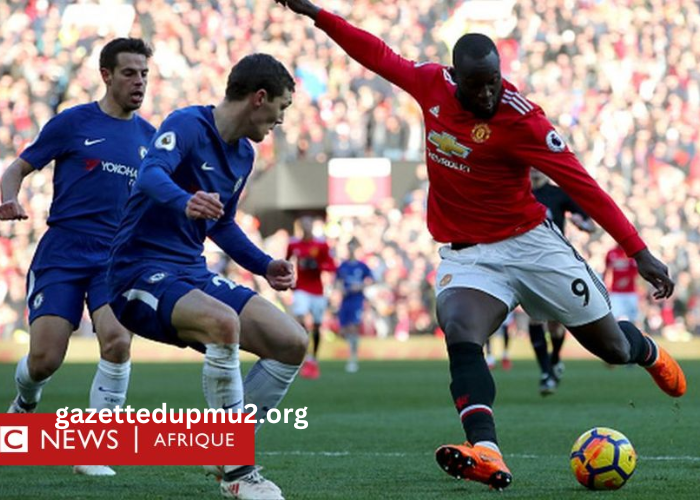Welcome to your comprehensive guide to “Classement Premier League”! Whether you’re a die-hard football fan or just starting to explore the world of English football, understanding the Premier League standings and what they represent is crucial. This article will cover everything you need to know about the Premier League standings, from how they work to how you can use them to enhance your football experience.
What is Classement Premier League?
“Classement Premier League” translates to “Premier League Standings” in English. It refers to the official table that ranks Premier League teams based on their performance throughout the season. The standings are a vital part of following the league, as they provide a snapshot of how teams are performing relative to each other.
Key Components of the Premier League Standings
The Premier League standings consist of several important components:
- Teams: The 20 football clubs competing in the Premier League.
- Matches Played (P): The number of games each team has played.
- Wins (W): The number of matches a team has won.
- Draws (D): The number of matches a team has drawn.
- Losses (L): The number of matches a team has lost.
- Goals For (GF): The total number of goals a team has scored.
- Goals Against (GA): The total number of goals a team has conceded.
- Goal Difference (GD): The difference between goals scored and goals conceded.
- Points (P): The total number of points a team has earned.
How the Premier League Standings Work
The Premier League standings are updated regularly throughout the season based on match results. Here’s a detailed look at how the standings are determined and what they signify:
Points System
Teams earn points based on their match results:
- 3 Points for a Win
- 1 Point for a Draw
- 0 Points for a Loss
The team with the most points at the end of the season is crowned the Premier League champion.
Ranking Criteria
If two or more teams have the same number of points, the following criteria are used to determine their positions:
- Goal Difference: The team with the higher goal difference is ranked higher.
- Goals Scored: If goal difference is the same, the team with more goals scored is ranked higher.
Relegation and Promotion
At the end of the season, the three lowest-ranked teams are relegated to the EFL Championship, and the top three teams from the Championship are promoted to the Premier League.
How to Read the Premier League Standings
Understanding how to read the Premier League standings is crucial for following the league effectively. Here’s a step-by-step guide on how to interpret the table:
Identify the Top Teams
Look at the top of the standings to see which teams are leading the league. These teams are in contention for the Premier League title and are performing the best.
Examine the Middle of the Table
The middle of the table shows teams that are mid-pack, not in danger of relegation but not in contention for the title. Teams here are often fighting for a place in European competitions.
Check the Bottom of the Table
The teams at the bottom of the standings are in danger of relegation. These teams need to improve their performance to avoid dropping to the Championship.
Analyze Goal Difference and Goals Scored
Look at goal difference and goals scored to understand which teams have been the most prolific and which have struggled defensively.
Importance of Classement Premier League
The “Classement Premier League” is more than just a table of numbers. It provides valuable insights into the season’s progress and various aspects of team performances.
Tracking Title Contenders
The standings show which teams are in the race for the Premier League title. It helps fans follow which clubs have the best chance of finishing as champions.
Identifying Relegation Battles
The table highlights which teams are at risk of relegation, creating a narrative of who might drop to the Championship.
Understanding European Qualifications
The standings show which teams are on track to qualify for European competitions like the UEFA Champions League, Europa League, or Conference League.
Following Team Performances
Fans can see how their favorite teams are performing over the course of the season and track changes in form and success.
Where to Find the Latest Premier League Standings
You can find the latest “Classement Premier League” standings on various platforms:
Official Premier League Website
- URL: Premier League Standings
- What You’ll Find: Official and up-to-date standings, match results, and team statistics.
Sports News Websites
- Examples: BBC Sport, ESPN, Sky Sports
- What You’ll Find: Regular updates on standings, match summaries, and expert analyses.
Football Apps
- Examples: SofaScore, Flashscore, OneFootball
- What You’ll Find: Live updates on standings, scores, and statistics.
Social Media
- Examples: Official Premier League Twitter account, Facebook page, and Instagram.
- What You’ll Find: Updates, highlights, and official announcements.
Analyzing Historical Premier League Standings
Historical standings provide insights into past seasons and help fans understand how the league has evolved. Here’s how to analyze historical data:
Compare Different Seasons
Look at how teams have performed over different seasons to see trends and changes in form.
- Example: Compare the top teams from the 1990s with the current top teams.
Review Title Winners
Study past title winners to understand what it takes to win the Premier League.
- Example: Analyze the strategies of successful teams like Manchester United, Liverpool, and Manchester City.
Examine Relegation Trends
Look at which teams have been relegated and promoted over the years to see patterns in team performances.
- Example: Identify which teams have bounced back to the Premier League after relegation.
Classement Premier League for Betting and Fantasy Football
The Premier League standings are essential for both betting and fantasy football. Here’s how to use the standings for these activities:
1. Betting
- Match Predictions: Use standings to predict match outcomes based on current form and team strength.
- Betting Markets: Check which teams are favorites for various betting markets such as match results, over/under goals, and top scorer.
Example: If Manchester City is at the top of the table, they might be a safe bet for winning their upcoming match.
2. Fantasy Football
- Team Selection: Choose players from teams that are performing well in the standings.
- Captain Choices: Select captains from teams with strong performances to maximize your fantasy points.
Example: If a player from a top-performing team like Arsenal is in form, they could be a good pick for your fantasy team.
Conclusion
The “Classement Premier League” is more than just a table of results; it is a dynamic and informative snapshot of the Premier League season. Understanding the standings helps you follow the progress of teams, engage with the league’s narratives, and make informed decisions for betting and fantasy football.




